Tom's Hardware Verdict
Samsung’s 500GB 980 is a very fast DRAM-less M.2 NVMe SSD that runs both cool and efficiently. For those penny pinchers on the hunt for a solid PCIe 3.0 x4 M.2 NVMe SSD, Samsung’s 980 is a good choice.
Pros
- +
+ Competitive performance
- +
+ Large, fast-recovering dynamic SLC cache
- +
+ Attractive design
- +
+ AES 256-bit hardware encryption
- +
+ Software package
- +
+ 980 Pro-like endurance and 5-year warranty
Cons
- -
Slow write speeds after the SLC cache fills
Why you can trust Tom's Hardware
Samsung’s SSDs are widely regarded as among the most reliable and best-performing in the market, and today the company hopes to extend that reputation with the introduction of the 980 NVMe SSD. Samsung’s 980 is designed for everyday PC users and gamers, although with performance ratings six times that of a standard SATA SSD, it possibly appeals to lower-budget content creators, too.
Samsung’s 980 also stands out with much more affordable pricing than the 980 Pro and 970 Evo Plus, a benefit borne of its DRAMless design that the company claims makes it the highest-performing DRAMless SSD on the market. Powered by the company’s V6 V-NAND and an efficient DRAMless controller that first debuted in the Portable SSD T7 Touch, this mix of hardware promises fast PCIe Gen3 performance and respectable endurance ratings.
Specifications
| Product | 980 250GB | 980 500GB | 980 1TB |
|---|---|---|---|
| Pricing | $49.99 | $69.99 | $129.99 |
| Capacity (User / Raw) | 250GB / 256GB | 500GB / 512GB | 1000GB / 1024GB |
| Form Factor | M.2 2280 | M.2 2280 | M.2 2280 |
| Interface / Protocol | PCIe 3.0 x4 / NVMe 1.4 | PCIe 3.0 x4 / NVMe 1.4 | PCIe 3.0 x4 / NVMe 1.4 |
| Controller | Samsung Pablo | Samsung Pablo | Samsung Pablo |
| DRAM | DRAMless / HMB | DRAMless / HMB | DRAMless / HMB |
| Memory | Samsung 128L V-NAND TLC | Samsung 128L V-NAND TLC | Samsung 128L V-NAND TLC |
| Sequential Read | 2,900 MBps | 3,100 MBps | 3,500 MBps |
| Sequential Write | 1,300 MBps | 2,600 MBps | 3,000 MBps |
| Random Read (QD1) | 17,000 IOPS | 17,000 IOPS | 17,000 IOPS |
| Random Write (QD1) | 53,000 IOPS | 54,000 IOPS | 54,000 IOPS |
| Random Read | 230,000 IOPS | 400,000 IOPS | 500,000 IOPS |
| Random Write | 320,000 IOPS | 470,000 IOPS | 480,000 IOPS |
| Security | AES 256-bit encryption | AES 256-bit encryption | AES 256-bit encryption |
| Endurance (TBW) | 150 TB | 300 TB | 600 TB |
| Part Number | MZ-V8V250BW | MZ-V8V500BW | MZ-V8V1T0BW |
| Warranty | 5-Years | 5-Years | 5-Years |
Samsung targets the 980 at lower price points with capacities that include 250GB, 500GB, and 1TB models. With prices of $50, $70, and $130, the 980 hits the market with affordable price points at each capacity. That stands in contrast to the rest of the company’s SSD families, many of which span from 2TB to 8TB and cost hundreds of dollars.
Samsung’s 980 comes with TurboWrite 2.0, meaning it features a massive SLC buffer that's larger than the cache on the 970 Evo and 970 Evo Plus. This speedy buffer absorbs data at a faster rate before write speeds degrade as the workload spills into the native TLC flash. However, the 980's TurboWrite 2.0 implementation is a bit different than the 980 Pro’s; instead of a hybrid arrangement with both static and dynamic TLC caches, the 980 comes with just a dynamic SLC. This enables more cache capacity for the 500GB and 1TB models than the 980 Pro, but due to the 980's lower-end SSD controller, the SSD isn't quite as fast when the cache is full.
| Header Cell - Column 0 | 970 Evo Plus - Intelligent TurboWrite 1.0 | 980 - Intelligent TurboWrite 2.0 | ||
|---|---|---|---|---|
| Capacity | Default | Intelligent | Total | Intelligent / Total |
| 250GB | 4GB | 9GB | 13GB | 45GB |
| 500GB | 4GB | 18GB | 22GB | 122GB |
| 1TB | 6GB | 36GB | 42GB | 160GB |
Interfacing with the host over a PCIe 3.0 x4 link, the 980 NVMe SSD can up to 3.5/3 GBps of sequential read/write throughput and even sustain up to 500,000/480,000 random read/write IOPS at its highest capacity. But, while peak figures are eye-catchers, the real key to application performance lies in the QD1 random performance rating. Samsung rates the drive with up to 17,000/54,000 read/write IOPS at QD1, which promises responsive performance in everyday desktop PC workloads.
Like the 980 Pro and 970 Evo Plus, the new 980 comes factory over-provisioned by roughly 9% and is backed by a five-year warranty or up to the respective TBW rating, which varies based on the capacity of the drive (150 TB per 250GB). The 980 also boasts the same AES 256-bit Full Disk Encryption feature set that's compliant with TCG/Opal v2.0 and Encrypted Drive (IEEE1667) standards.
Software and Accessories
Samsung's Magician application is one of the best pieces of storage management software available, and it's getting better with its next iteration. Magician 6.3 comes with the same capabilities as prior versions but also brings the debut of Full Power Mode support. Like the WD Black's SSD Dashboard Game Mode, this feature allows the 980 to operate at peak performance by disabling the lower power states, thus reducing the latency associated with transitioning between power states. Unforunately Magician 6.3 isn't available for today's review, but Samsung says it will be available within the next few weeks. The company also provides additional software to quickly clone your old data to your new Samsung SSD.
A Closer Look
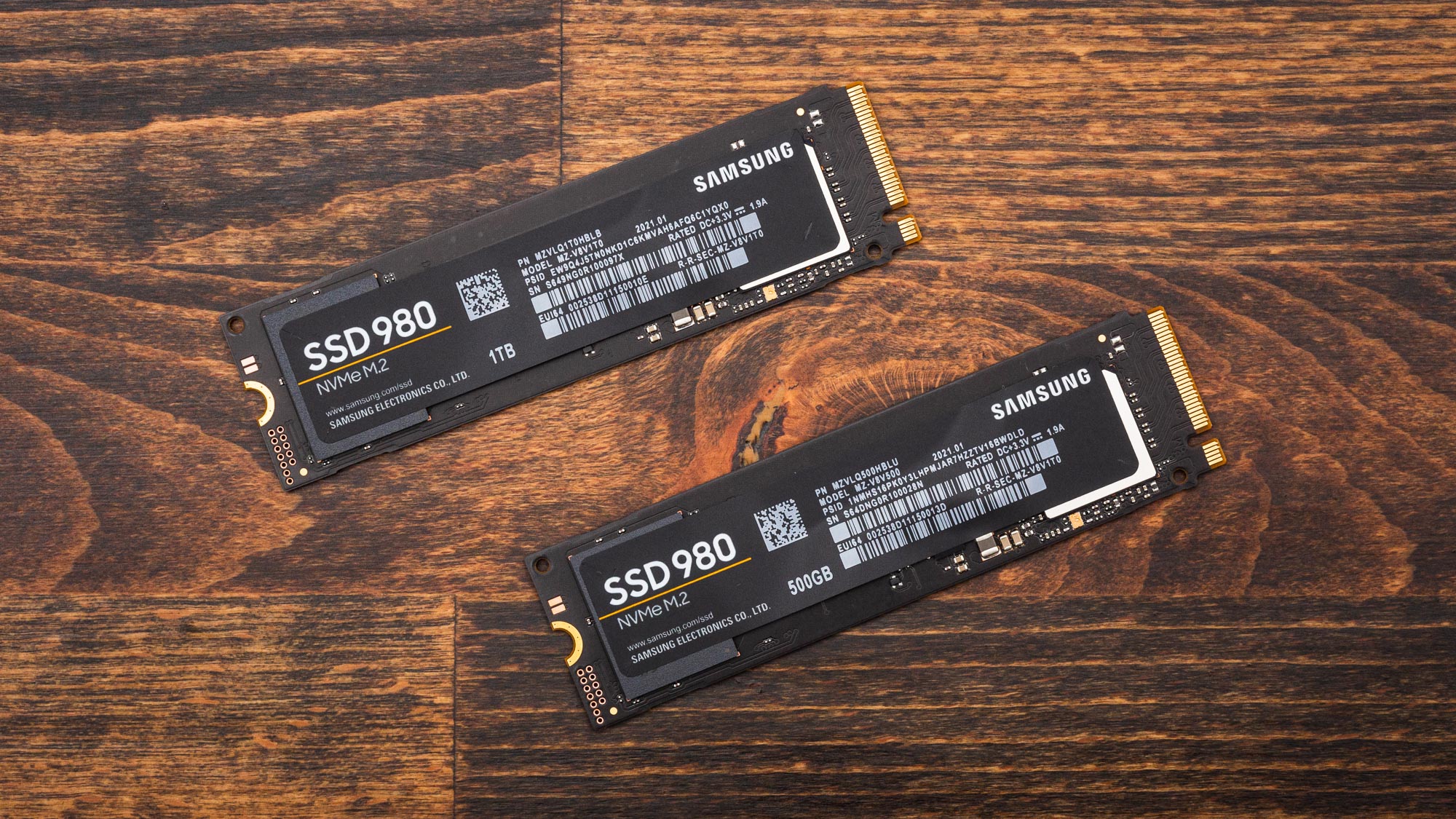
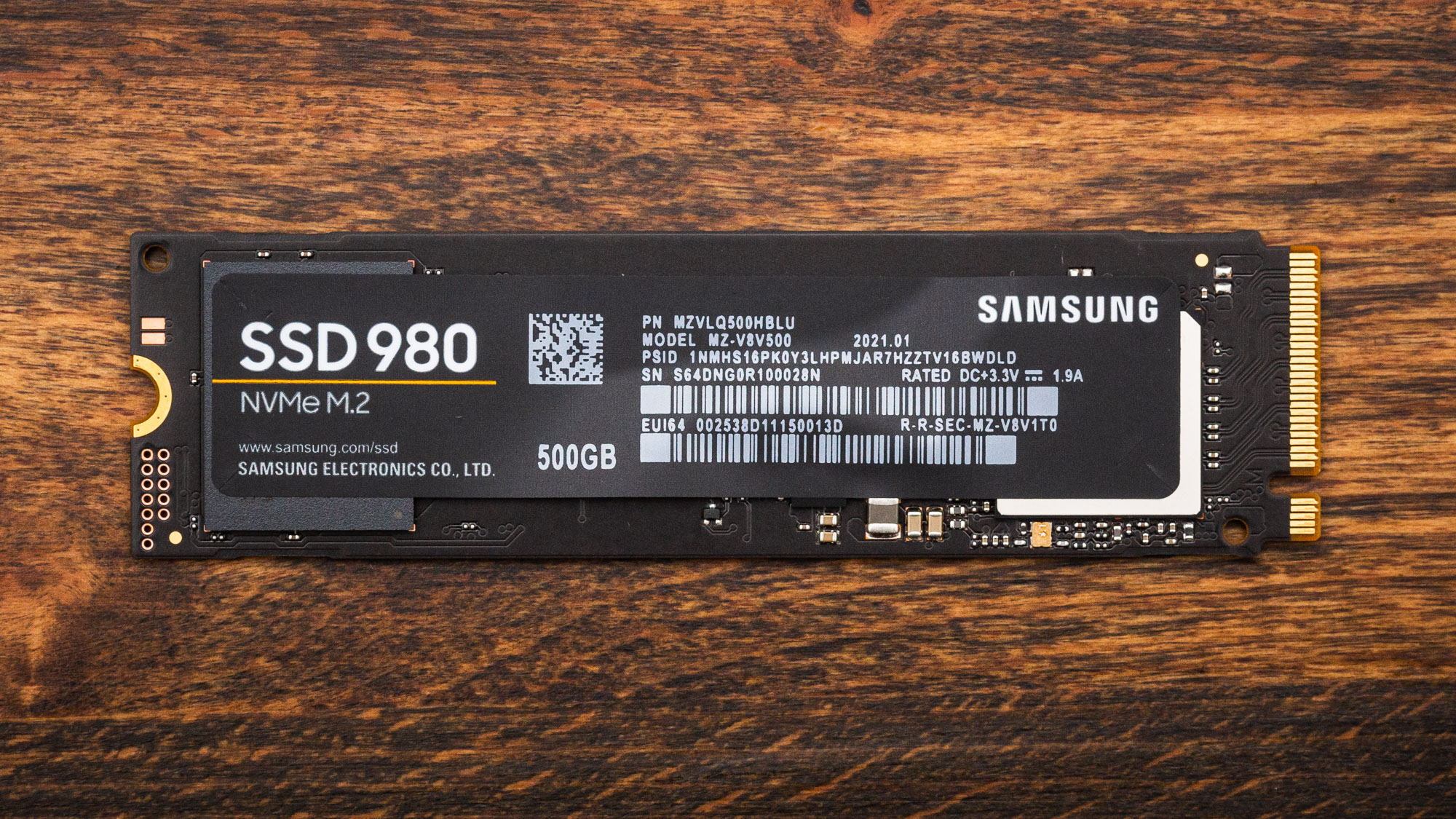
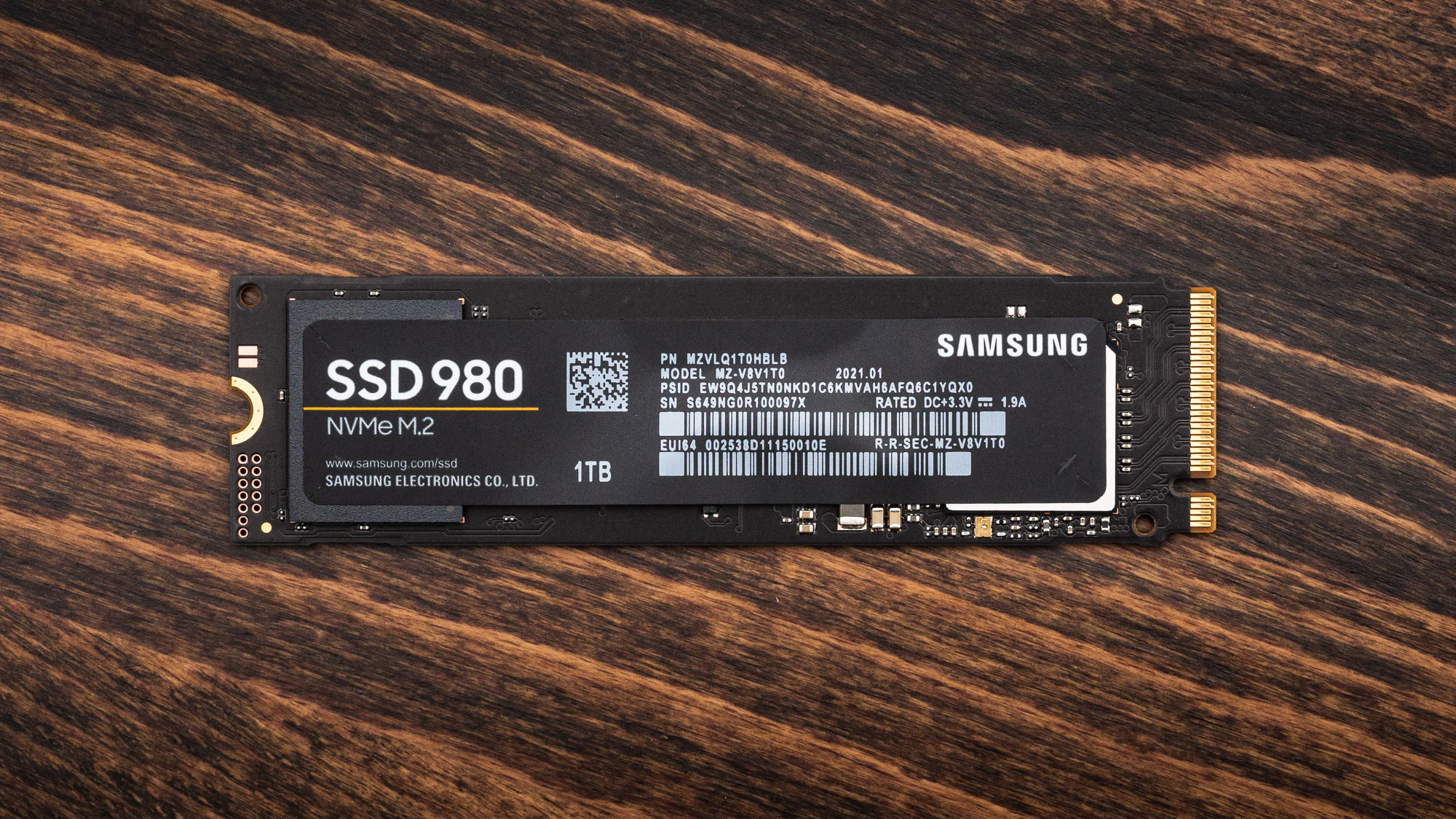
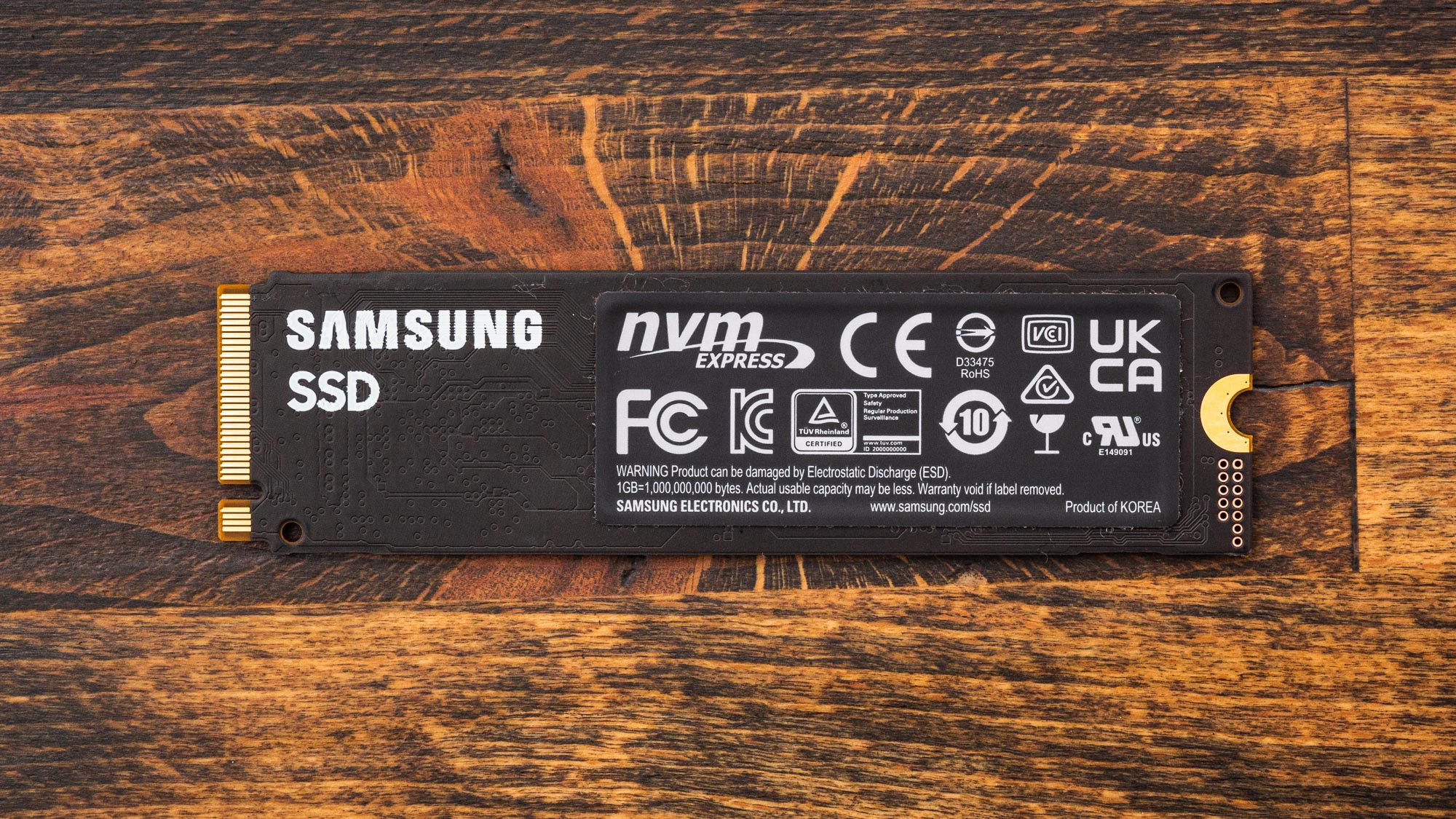
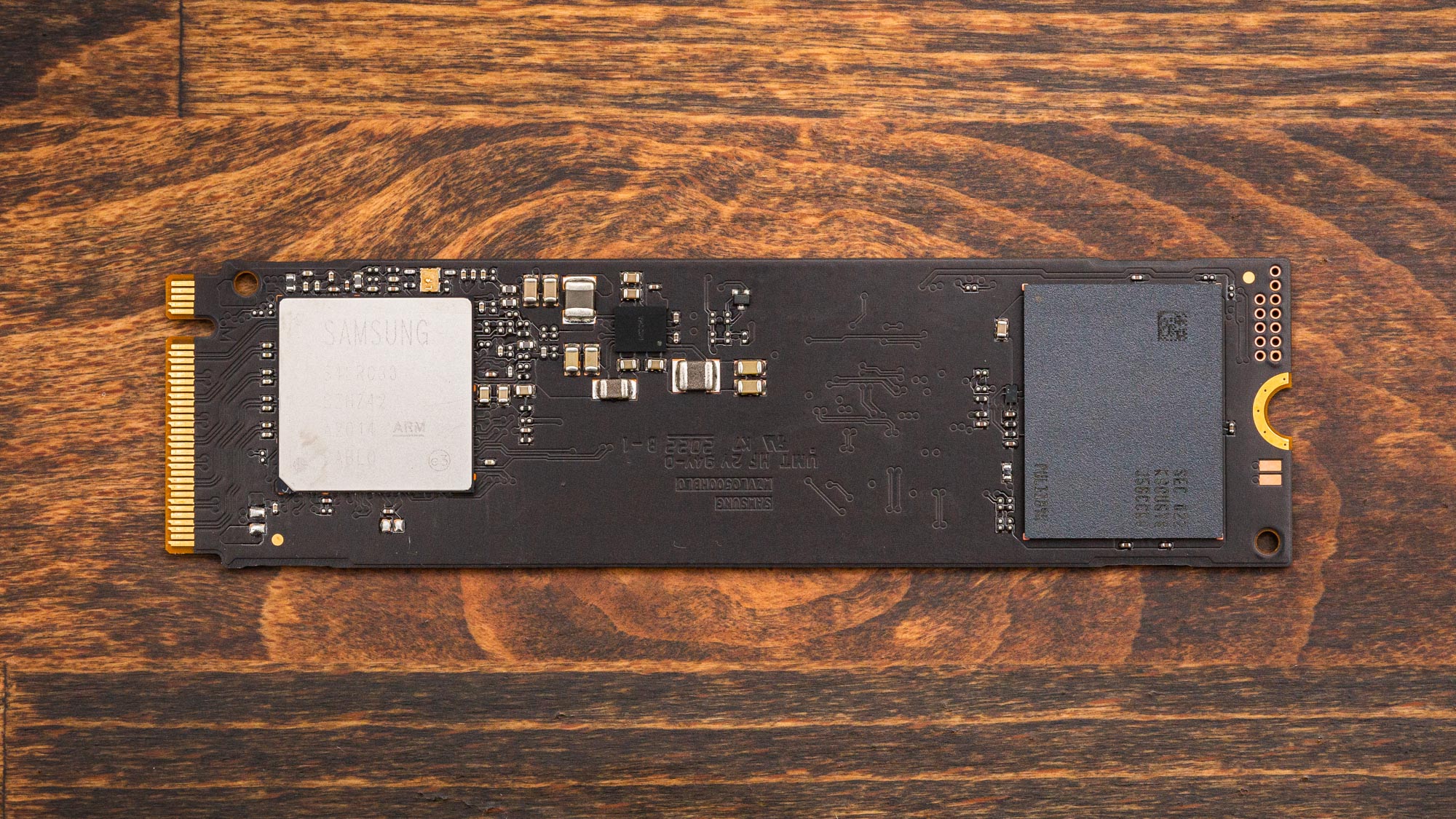
Samsung’s 980 comes in an M.2 2280 single-sided form factor with a black PCB. To keep the SSD cool, Samsung incorporated a few thermal solutions into the design. The heat spreader label on the back of the drive improves thermal dissipation to help combat excess heat, and the Dynamic Thermal Guard technology invokes thermal throttling if needed. The 980 also supports Active State Power Management (ASPM), Autonomous Power State Transition (APST), and the L1.2 ultra-low power mode to regulate overall power consumption. The controller also comes with a nickel-coating that the company claims reduces its operating temperatures by five degrees Celsius.

Speaking of which, Samsung’s Pablo, an NVMe 1.4 compliant SSD controller, powers the 980. The company wasn’t too forthcoming with deeper details on the controller. We believe it to be a multi-core Arm architecture that may be manufactured using its 14nm process, especially since the 980 Pro was so proudly touted for being manufactured on the company’s 8nm process node.
The controller features half the NAND channels of the controllers that power the company’s 970 Evo Plus and 980 Pro, which, along with the lack of a memory controller, helps save on cost due to less complex logic. Naturally, that comes at the expense of performance. However, to mitigate these performance bottlenecks, the DRAMless architecture uses host memory buffer (HMB) tech that leverages the host system’s DRAM instead of an onboard DRAM chip to host the FTL mapping table.
This technology allows the controller to leverage a small portion of the host system’s DRAM memory by using the Direct Memory Access functionality that's baked into the PCI-Express interface. The company programmed the SSD to use 64MB of system memory for the 980’s needs, which is similar to other HMB drives on the market.
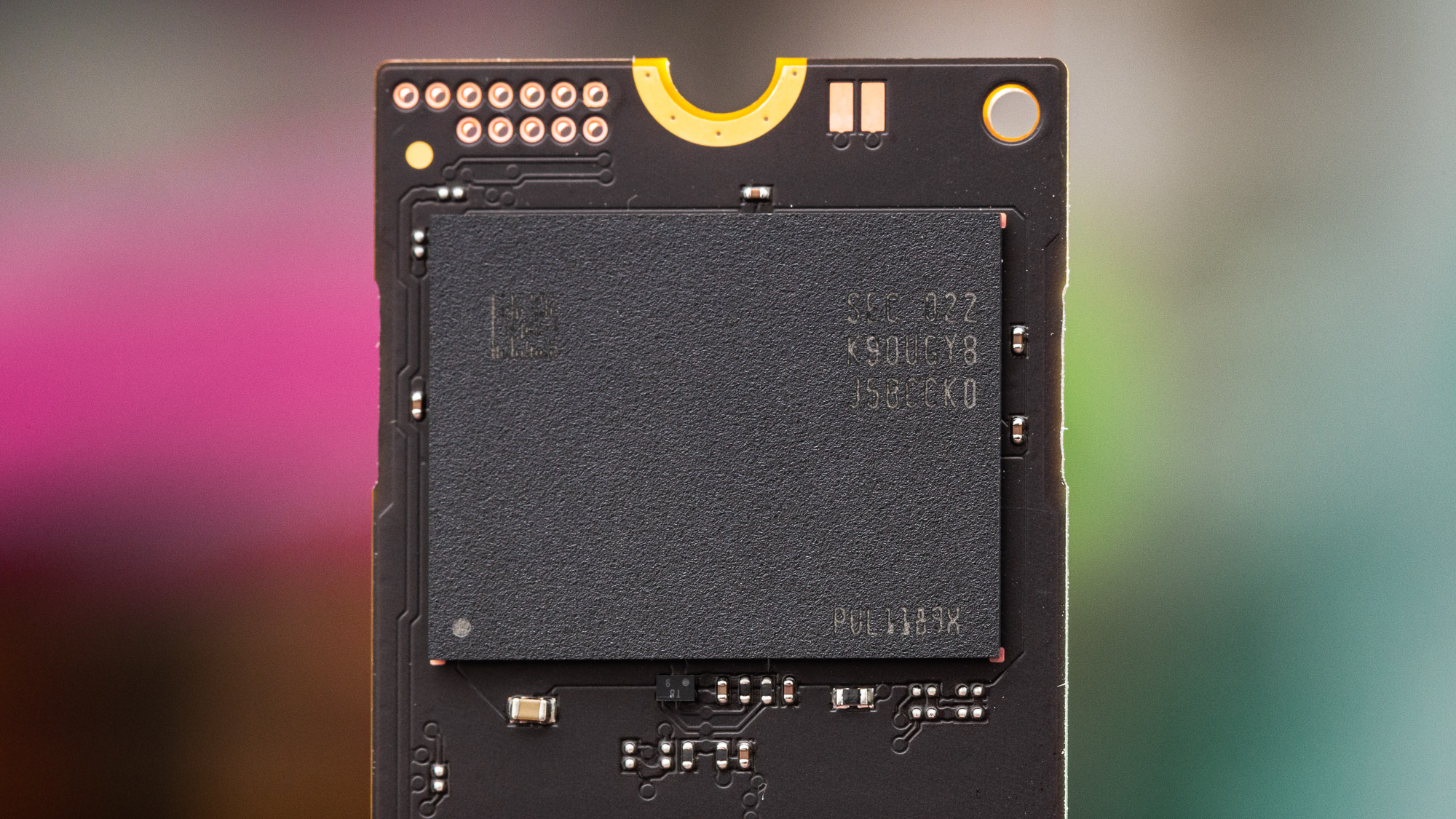
Each capacity of Samsung’s 980 NVMe SSD comes with a single NAND package containing up to sixteen 512Gb dies. Samsung’s V6 V-NAND TLC has a 2-plane architecture. While this is only half the number of planes compared to competing types of flash, Samsung says it has engineered the silicon to still provide speedy programming and read times. For further detailed reading, we covered this flash more extensively in our review of the Samsung 980 Pro.
MORE: Best SSDs
MORE: How We Test HDDs And SSDs
MORE: All SSD Content

Sean is a Contributing Editor at Tom’s Hardware US, covering storage hardware.
-
HideOut I have to agree with Hotaru, this "inexpensive" as you call it isnt. Also, How is it that its read IOPS is 3x slower than its write?Reply -
magbarn SK Hynix was the underrated NVME value of 2020.....Reply
Would prefer that drive over the 980 any day. -
Krotow Thanks about the review. Will help to warn people who are searching for 980 Pro drive about avoiding this curiosity.Reply -
atomicWAR Its to bad they didn't make a 2TB model. These would be great for budget NVMe game drive.Reply -
escksu Its not that cheap..... But still decent. Performance wise, its fine.Reply
Many people thought that you need to fastest drive and PCIE 4.0 ones will be much faster. All the 5000-7000MB/s are just sequential transfers on benchmarks, you will not be able to hit such speeds in reality. -
TCA_ChinChin This is still pretty expensive for a dram-less drive, no matter how much software Samsung packs to increase performance.Reply -
ukanio Change MLC to TLC is a big mistake, endurance is low and disk slow down after fill witch data. It's 980 EVO, PRO stop to exists on 970. Shame on samsung! How dare you!Reply